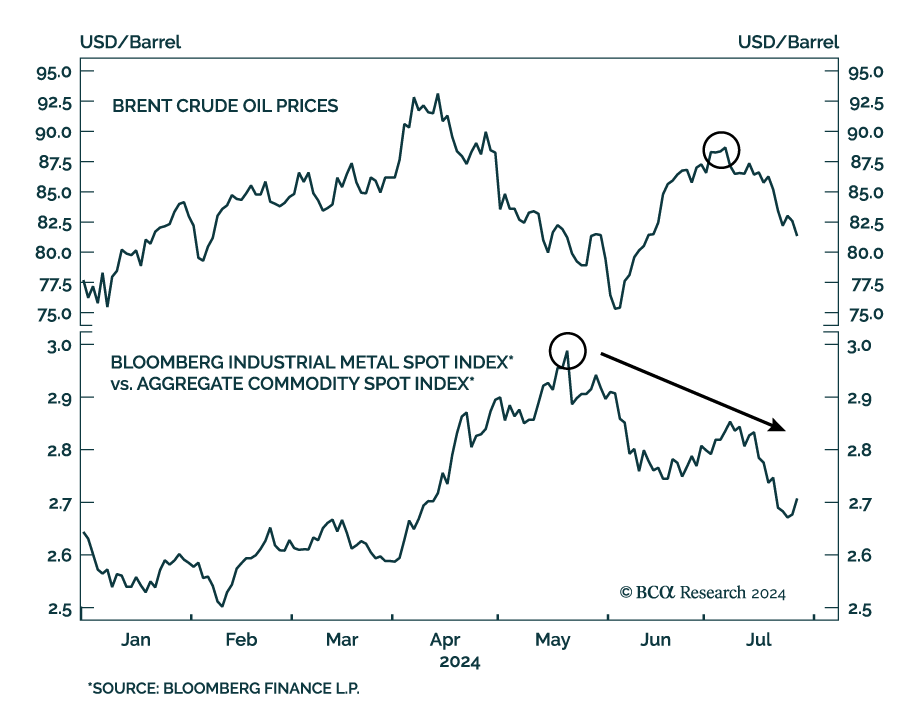Oil Prices Responding To Subdued Demand Conditions
Brent prices have fallen 6% so far in July, reversing their June gains.

Interestingly, these losses are occurring despite escalating Middle East tensions and quickening Chinese industrial profit growth in June (see The Numbers), both of which are supportive developments for oil prices.
Within the broad commodity complex, oil prices tend to lag peaks and troughs in the business cycle. Conversely, industrial metals prices’ high exposure to the manufacturing sector makes them a leading economic indicator. They peaked back in May and have since been underperforming the broad commodity complex.
Oil prices may therefore be catching up to the reality of subdued demand conditions.
Our Commodity and Energy strategists had highlighted that OPEC, EIA, and IEA oil demand growth forecasts are likely too optimistic. While they all project a moderation in demand this year, none of them anticipate weak consumption growth by historical standards. That said, we assign high odds that the global economy will fall into recession on a 6-to-12-month timeframe.
On the supply side and aside from Middle East tensions, the latest shift in OPEC+’s production agreement suggests that the group may be lowering its sights from raising prices to defending a price floor. Moreover, supply cuts will not begin before October and will merely offset increased output from non-OPEC+ producers.
Weak demand dynamics are thus likely to dominate the oil supply/demand landscape, making lower prices the path of least resistance on a cyclical investment timeframe. Investors should remain underweight.